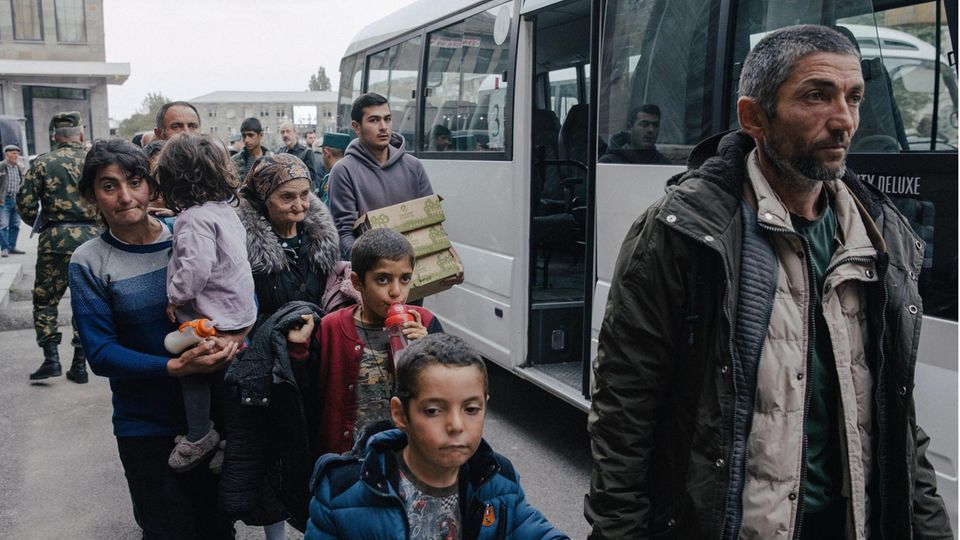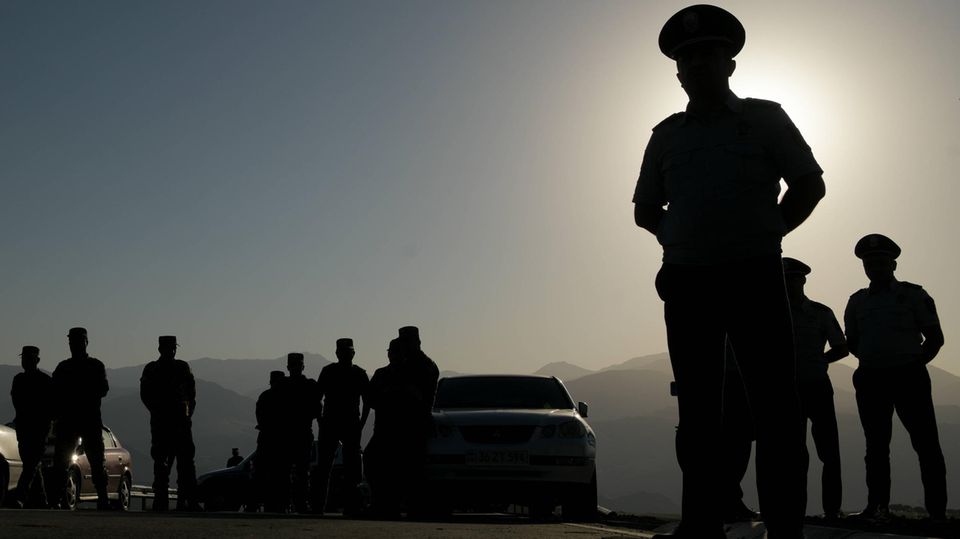Behind the story
Nagorno-Karabakh: On a wandering through the Caucasus
© private / star
When the conflict over Nagorno-Karabakh intensified at the end of September 2023, our reporter traveled to the only access road – and witnessed the beginning of the end of the republic.
Making-of – that’s the name of our new format on stern.de. We want to give you a personal look behind the scenes, tell us about our everyday journalistic life, what we experience during research and what motivates us in the editorial team. We’re starting a little series looking back at our moments in 2023.
Azerbaijan had previously cut off the Armenian-inhabited Nagorno-Karabakh from the outside world for weeks and left the residents starving. As I stand in the morning at the Lachin Corridor, the only road that connects Armenia to the region, there is no sign that people are crossing the border that day. The Red Cross has set up tents where people will be cared for as soon as they arrive, but employees don’t know when that will happen.
Rollercoaster ride through the Caucasus
An Armenian journalist, who also translates the conversations, and a driver are traveling with me. We wait almost two hours. Then we get in the car back to the capital Yerevan. The road runs through the Caucasus, up and down for hours, like a roller coaster. We stop and change places several times to settle our stomachs. The driver had had his wisdom teeth pulled just two days earlier – he jokes about it, but the wild ride is bothering him. Meanwhile, the Armenian journalist is trying to find out more about the situation from his contacts in the capital and in Nagorno-Karabakh. He talks on the phone, writes non-stop and at some point says: “It could still happen today.”
A good friend of his in Nagorno-Karabakh, he says, heard about buses that were allowed to cross the border that same day. The information is not secured. Nobody knows anything precise. We stop. Should we continue to the capital? Or turn around? If the border remains closed, a whole day in which I could interview other people will be lost. Border or capital?
If people actually come over, we would be among the first local media to describe how they are doing. What they have experienced and feel. Without days in between when memories fade or families are scattered across the country.
So: limit.
Where border officials were yawning hours ago, tense relatives now stand
We rush back down the rollercoaster road even faster than before, the journalist calls his friend in Nagorno-Karabakh and, between a lost telephone and internet connection, he reaches him. “They’re coming,” he says. “The buses are leaving.”

We stop with screeching tires at the border, which had been quiet just a few hours before. Now, alongside the border guards in uniform, there are also family members of the people in Nagorno-Karabakh. They want to pick up their relatives, press the phones to their ears and dial numbers again and again. Some talk about how longingly they have been waiting for this moment for weeks and had almost never expected it. And then they come: one ambulance after another rushes down the hills from Nagorno-Karabakh, carrying the sick and weakened.
Later, cars arrive in which the displaced people have packed their lives: stuffed animals, some clothes, photo albums. People tell us with stone faces: We don’t know whether we will ever see our homeland again.




